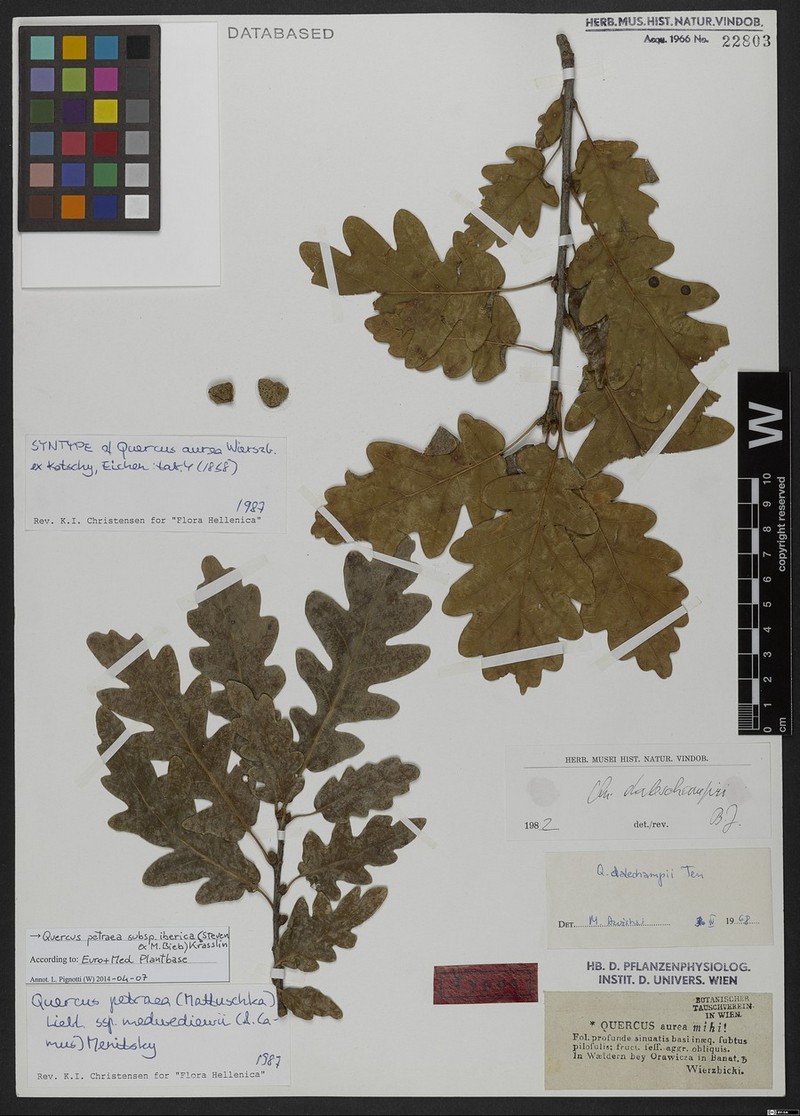| Quercus dalechampii | |
| Author | Tenore 1830 Index Seminum (NAP) 1830: 15 |
| Synonyms | lanuginosa subsp dalechampii (Ten.) A.Camus
1936 robur var. dalechampii (Ten.) Fiori & Paol. 1908 petraea var. dalechampii (Ten.) Cristur. 1972 sessileis var. aurea (Wierzb. ex Rochel) Schur 1857 |
| Local names |
Oak of Daléchamp; |
| Range | Central and SE Europe to Austria and Sicily; 800-1300 m; |
| Growth habit | |
| Leaves | 6-15 cm long, 4-10 cm wide; resembles Q.petraea, but leaves are thinner, obovate, , more lobed (3-6 pairs of narrow, irregular, subacute lobes, the lobe at the middle being often lobulate), base rounded or cordate; hairless above, slightly pubescent beneath (less than in Q.pubescens); petiole glabrescent 1.5-3 cm; |
| Flowers | male with 8-10 stamens shorter than the perianth; rachis of the female catkin 0.5-6 cm long, bearing 1-5 flowers; |
| Fruits | acorn 1.2-2.3 cm long; cup halfround, with diamond-shaped, warty, slightly hairy, greyish scales; enclosed 1/3 to 2/3 in the cup. |
|
Bark, twigs and |
bark very thick, deeply furrowed, brown or blackish; twigs hairless; terminal buds often with persistent stipules; |
| Hardiness zone, habitat | prefers dry, rocky soils; |
| Miscellaneous |
-- Sub-genus Quercus, Section Quercus, Series Roburoid;
|
| Subspecies and varieties |
|
| Pictures |
|







